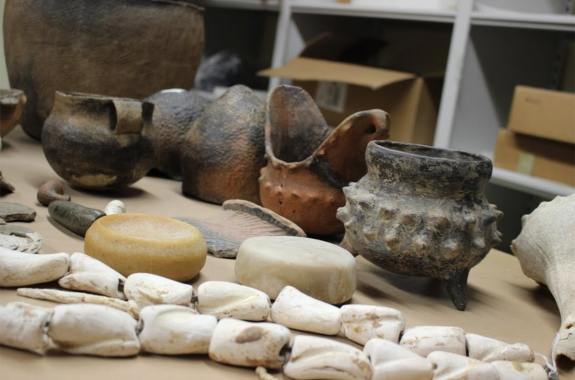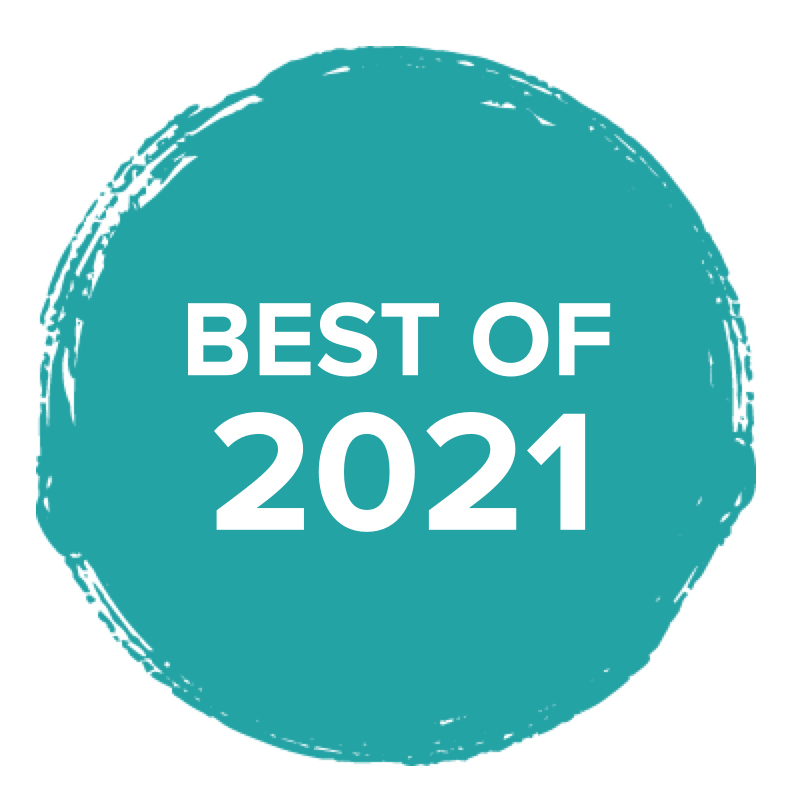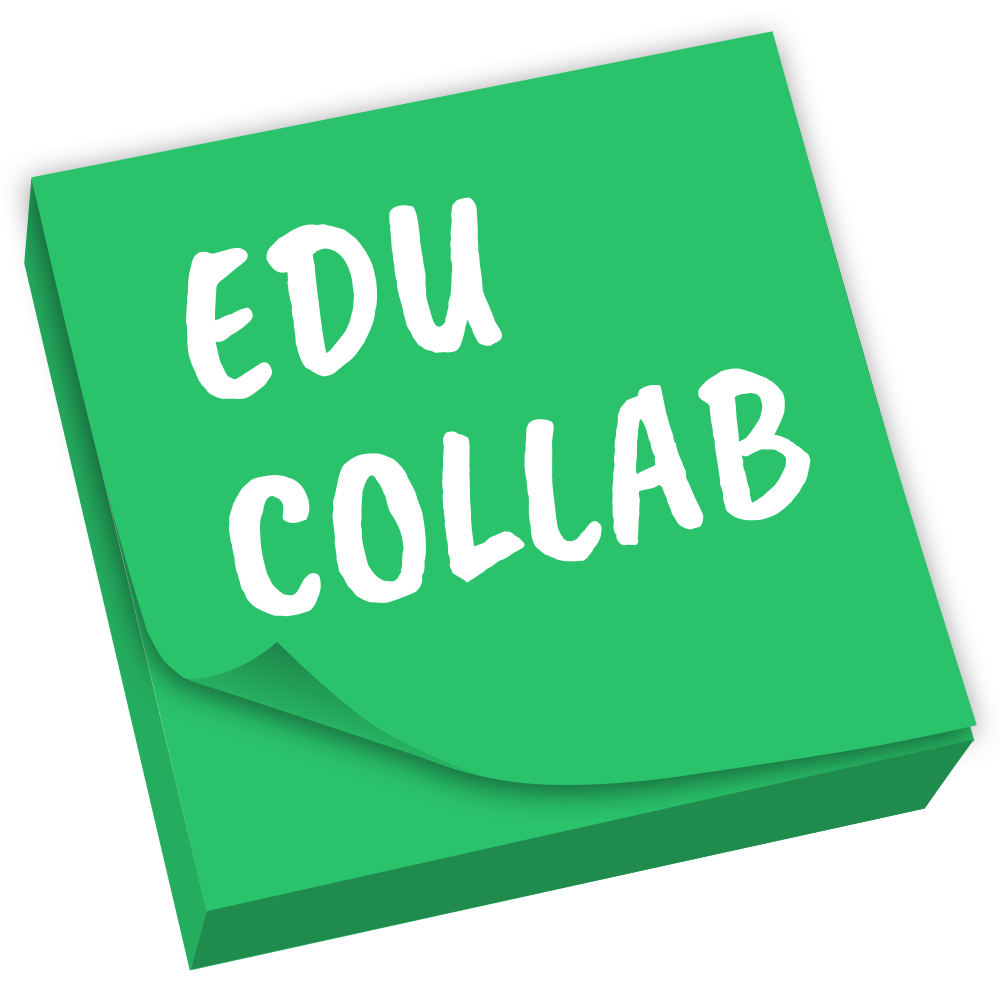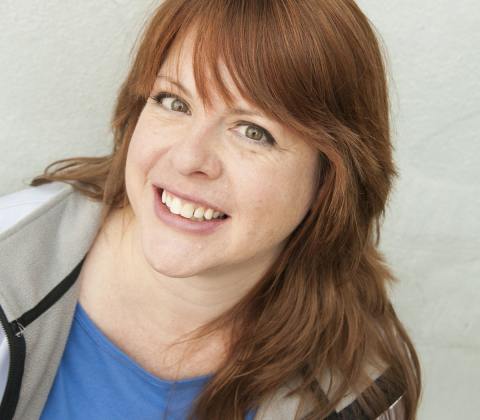Grade Level
6-12
minutes
2 hours
subject
Physical Science
Activity Type:
Indigenous Ways of Knowing, thermal energy, kinetic energy
You may have heard that some people are brave enough to walk across hot coals, but would you ever attempt to carry coals, or a whole fire, in your hands, for miles and miles?
Cultures from around the world have been doing just that since prehistoric times. Long before the invention of silicone, aluminum, or flame-retardant chemicals, and without computers or even thermometers, Indigenous peoples such as the Cherokee of North America crafted containers that allowed them to carry fire. Cherokee people have been using pots like the ones pictured below to carry hot coals and small fires for thousands of years.

How did the Cherokee develop these pots? What do the designs of these pots teach us about thermal energy? And how has the knowledge and skill to create them lasted for generations?
This resource was created as part of the Science Friday Educator Collaborative. If you are implementing this in the classroom, please check out the Educator’s Guide.
First, we need to remember that science is more than what happens in a lab or under a microscope, and it is as old as the human race. Listen as Annette Lee, astrophysicist, artist, and Director of Native Skywatchers, and Science Friday producer Christie Taylor discuss where our ideas about science come from:
Science has always been a part of Indigenous cultures, practiced and shared through Indigenous ways of knowing, and it contributes to the larger body of scientific knowledge in a substantial way. For tens of thousands of years, Indigenous peoples have been making key observations about how the world works. Within each diverse and distinct Indigenous community, there is an incredibly rich body of Indigenous knowledge. Though people trained in the sciences and in Indigenous ways of knowing may use different terminology and focus on different scales, there’s a lot of insight that can be shared between the two bodies of information. However, science education in the United States is often based on Western methods and philosophies to the exclusion of other bodies of knowledge, ways of knowing, and understanding the world.
One way Indigenous cultures pass on knowledge is through storytelling. Listen as Christie Taylor explores one example of science and storytelling with Wilfred Buck, who is Cree, also known as Ininew, one of Canada’s largest First Nations groups and a science educator who teaches First Nations students.
By searching in stories and sharpening your senses, you can find science in places and times you might never have imagined. In three activities, we are going to explore how early Cherokee people used science to figure out how to carry hot coals and flames, while also exploring how science can be practiced and shared using methods you may not have considered.
To get started, watch the video below and reflect on the following questions:
- Is there science in this story?
- What physical and behavioral characteristics of animals are described in this story?
- How did each animal in the story experience the heat?
- Did all the animals who went to the tree touch the fire directly?
- How did Water Spider use her observations to inform her process?
- How do you think the storyteller, Robert Lewis, learned this story?
- Was textbook science vocabulary used?
- Did you still understand the science without the science vocabulary being used?
How Do You Experience Heat?

Think about the sensations, objects, places, or events you associate with heat. Together, these describe how you experience heat. Write down some examples of heat that come to mind. Using those examples, take a moment to write or draw an answer to the questions below:
- What is heat?
- Does heat move around?
- How do you know?
- How did you gain this knowledge? Did someone pass this knowledge about heat to you?
Now share that answer with people around you. What is the same in your answers? Are there differences?

One definition of heat is the energy an object has because of the movement of its molecules; but because we have all had experiences with heat, we understand something about what heat is and its properties, even without knowledge of molecules and their actions.
Activity 1: How Does Heat Move?
The first step in understanding how Cherokee people made their fire pots is discovering how heat moves through direct contact with a material, a process called thermal conduction. In this investigation, we are going to examine how heat moves by seeing how quickly butter slides off of spoons of varying sizes and materials that are set in hot water. You will need to determine if there are differences in temperature between the spoons, collect your observations, and be able to communicate the information you gather to others. However, you won’t have thermometers, charts, writing instruments, paper, timers, rulers, or other tools of standardized science. You and your group members will only have your hands, your senses, and your memories.
Materials
3-5 spoons of similar size but different materials: metal, wood, porcelain, and plastic
Hot water (boiling is best, but very hot tap water also works)
1 beaker, large enough to support the spoons in an upright position (you can substitute any container sturdy enough to hold the hot water safely)
1 tbsp of cold, firm butter, cut into 4 equal pieces (squishy, room temperature butter will not stick to the spoons)
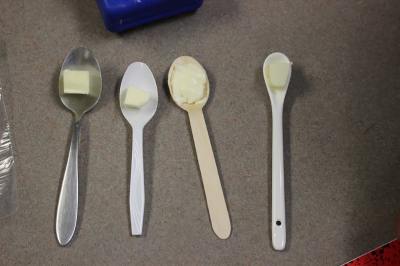
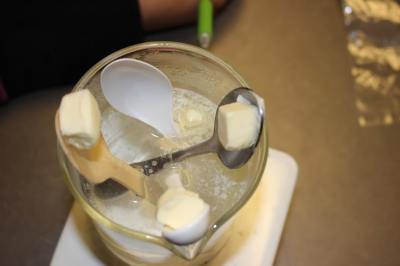
Thermal Conduction Investigation: Materials
- If you have not already done so, put away any writing instruments, paper, or any other tools besides your hands, your senses, your mind—and those of your peers.
- Fill the beaker or container three-quarters of the way full of hot water.
- Place a square of cold butter in the bowl of each spoon. Press firmly to make sure it sticks to the spoon.
- Insert the spoon handles down into the hot water simultaneously, leaving the butter side of each spoon up in the air. Lean the spoons against the rim of the container. Make sure the spoons are not touching each other.
- Watch to see in what order the butter on the spoons melts off.
- Gather information about the temperature of the spoons and how heat moves through them.
- Be ready to share information and observations with the other people in your group and other teams.
What does the order in which the butter melted tell you about the movement of heat in this group of spoons?
Discussion Questions
- Did the butter move? Which butter slid off first? Which slid off last?
- Did the heat move? What direction did it go? Was the path the heat traveled continuous or interrupted?
What Is Thermal Conductivity?
Remember, the transfer of heat energy by direct contact is called thermal conduction. For example, in this investigation, heat is transferred from the water to the butter through the spoon, which is in direct contact with both the water and the butter. Thermal conductivity is the ability of a material to transfer heat. When that heat energy moves easily through a material, we say it is a good conductor of energy, or that the material has a high thermal conductivity.
Reflection Questions
- Which spoon had the highest thermal conductivity? Which had the lowest thermal conductivity? How do you know?
- Would you want a container full of hot stuff that you plan to hold with your hands to have high thermal conductivity or low thermal conductivity? Why?
- Why are some materials better conductors than others?
Check out this video on the thermal conductivity of different materials to learn more.
Activity 2: Do Factors Other Than Material Affect Thermal Conductivity?
Now, look at your spoons again, carefully. We know each spoon is made of a different material, but there may be other variables that may be affecting the outcome, such as the size, shape, and structure. This next investigation also uses hot water and spoons, but this time we are focusing on the shape and size of the spoon rather than its material to see how these variables affect thermal conductivity.
Materials
2 spoons of the same material but different sizes (ex: 1 small and 1 large stainless steel spoon, or 1 small and 1 large wooden spoon)
Hot water (boiling is best, but very hot tap water also works)
1 beaker, large enough to support the spoons in an upright position (you can substitute any container sturdy enough to hold the hot water safely)
1 tbsp of cold, firm butter, cut into 4 equal pieces (squishy, room- temperature butter will not stick to the spoons)
Thermal Conduction Investigation: Size And Shape
- Fill the beaker or container three-quarters of the way full of hot water.
- Place a square of cold butter in the bowl of each spoon. Press firmly to make sure it sticks to the spoon.
- Insert the spoon handles down into the hot water simultaneously, leaving the butter side of each spoon up in the air. Lean the spoons against the rim of the container. Make sure the spoons are not touching each other.
- Watch to see in what order the butter on the spoons melts off.
- Gather information about the temperature of the spoons and how heat moves through them.
- Be ready to share information and observations with the other people in your group and other teams.
How do the shape and size of an object affect the movement of energy?
Reflection Questions
- What are some differences between the two spoons?
- Which butter melted first? Why do you think that happened?
- Are there factors other than shape and size that might affect the melting speed of the butter?
Other Ways Heat Can Move
Conduction is not the only way heat energy can move. Convection occurs when heat is transferred through a gas or liquid by the hotter material moving into a cooler area. Radiation is energy radiated or transmitted in the form of rays, waves, or particles. Light, sound, heat, and X-rays are examples of radiation.
Fire can transfer heat energy in all three ways. Using the information you’ve learned about heat energy, think about examples of fire transferring heat via:
- Conduction
- Convection
- Radiation
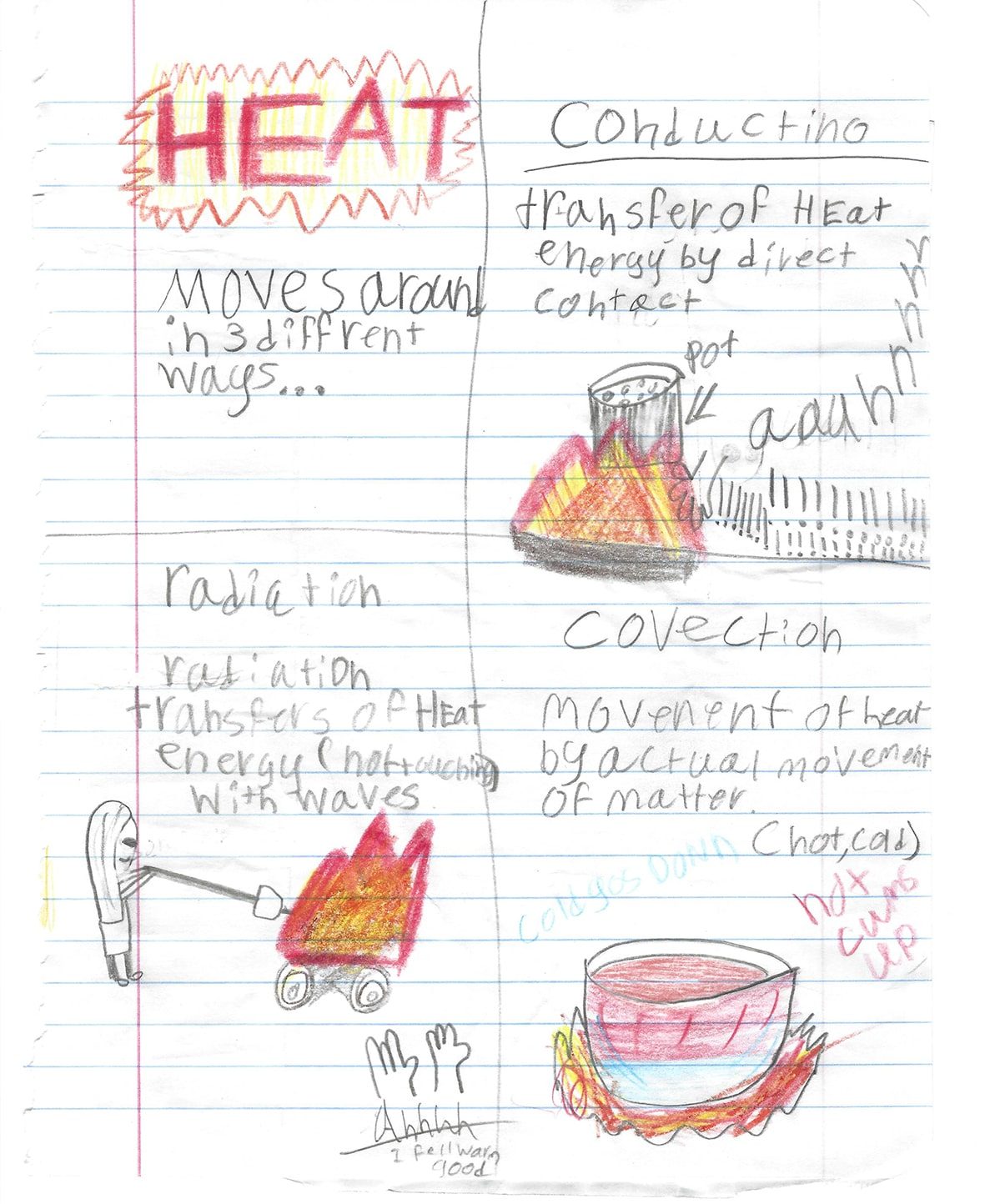
Other Ways Knowledge Can Be Obtained
Now that you have completed the first two activities, take time to reflect on the following questions:
- How did you figure all this out without writing anything down? What tools did you use?
- What else happened during these investigations that you think is important to share?
- Would any of the strategies you used to gather information and communicate your observations have been available for use 1,000 years ago?
Activity 3: Design Challenge—Build a Better Insulated Cup
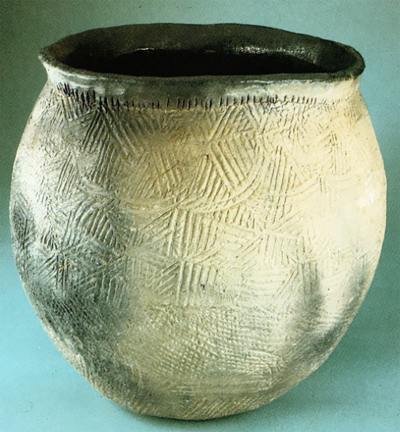
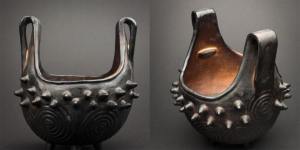
- Clay Fire Pot from Museum of the Cherokee Indian. Cherokee, North Carolina.
- Look back at the three fire pots held in the opening image at the Tri Council Meeting at Kituwah Mound.
Let’s look at each of the Cherokee fire pots (linked above) and focus on their design. After examining the photos, consider:
- How does the design of the burnished Cherokee pot differ from the fire pot?
- What would be the advantages and disadvantages of each design? (Hint: Think of the handle length of the spoons.)
- Can you draw any conclusions about the purpose of each pot from its design?
- What does the design of the pots tell us about the designer’s knowledge of how heat moves through matter?
Now it’s your turn to design. For this activity, you’ll need to collect assorted odds and ends to use for building materials. Limit yourself to what you have on hand, or what you can find without buying something new.
Be sure to include building materials related to each material tested in the conduction experiment. For example, for metal, you could use foil; for porcelain, you could use clay.
Suggested Materials
Foil
Wire
Craft sticks
Clay
Plastic cups
Plastic bags
Design Challenge
- Background: While people today rarely carry hot coals in their hands, they do carry around hot drinks. From coffee to cocoa and tea, kids and adults alike have busy lives and often head out the door with something hot in their hands to drink on the go.
- Problem: Paper and styrofoam cups create a lot of waste. Often the cup is too hot to carry, and then the hot yumminess inside gets cold fast, especially if you skip the plastic lid.
- Challenge: Reduce waste and keep your beverage hot by creating a reusable and/or recyclable, sturdy cup that will maintain your beverage’s temperature and remain cool enough on the outside to carry comfortably in your hand.
- Brainstorm: How can you apply what you learned about thermal conduction and thermal conductivity during the first two activities to create the most efficient insulated cup? Discuss your ideas with your group. Be sure to think about materials as well as shape and size.
- Design and Build: Based on observations during the investigations, select materials and build your cup!
- Be prepared to share your group’s process and choices related to material, design, and function.
Reflection Questions
- How did you select your materials?
- Did you change your design as you built your cup?
- How could you test your cup for heat retention, that is, the amount of heat an object or material can store over time?
- How did the information you gathered during the investigations influence your cup’s final shape and building material?
- What would someone need to know to build a cup like yours?
What Does All This Have To Do With 1,000-Year-Old Pots?

Storytelling As A Tool For Science
Today, fire pots are made using the same knowledge and methods that were available thousands of years ago. How did that information survive through all that time? Cultures around the world have been using storytelling as a way of passing knowledge from person to person for generations. Some stories describe cultural morals or beliefs, but many are explanations of the world based on scientific observations collected over thousands of years.
How does that work? Since we are exploring Cherokee fire pots, let’s hear a Cherokee story. As you listen, think carefully about Me-li’s actions during the story.
Kathi Smith Littlejohn, Eastern Band of Cheorkee, tells stories to the students of New Kituwah Academy on May 2, 2017. Credit Jessica Metz. You can also read a written version of this story in Living Stories of the Cherokee by Barbara R. Duncan.
- Can you identify the basics of the design process (observation, brainstorming, design, testing, redesign) in this story? What was Me-li’s design process?
- If you were trying to recreate Me-li’s design, could you do it based on the information you have in the story? Or is some information missing?
- What do your answers to the previous question tell you about how we could learn science from stories?
Reflection Questions
- Thinking about your insulated cup, how would you communicate your design to others today? What method would you use?
- Using any method available to you, how could you share your design so that it would still be available and usable to people who will be here hundreds of years from now?
How Do We Share Knowledge?
Me-li’s story and the firepots teach us that there are many ways to learn something, and many ways to teach something. Let’s listen to one example of how five different cultures describe a single natural phenomenon: the constellations in the night sky.
Why Is It Important To Include Different Methods Or Points Of View?
Reflect on your investigations into thermal conduction. You were asked to gather and communicate information in ways that may have been unfamiliar to you. Did you try a new way of gathering information, communicating information, or solving a problem? What impact did it have on your experience? Did you observe anything you might not have noticed if you had been using a thermometer? A pen and paper? Keep these reflections in mind as you listen to the clip below:
Reflection Questions
- What benefits are there to including different perspectives about how science is conducted, recorded, and shared with others?
- How do we make sure these different cultural perspectives and ways of thinking are represented in our study and practice of science?
What Is Science?
If we take into account a broad and diverse range of ways of thinking, how do we define science? Does science have to look a certain way? Listen to the conversation below as you begin thinking about the origins and definitions of science.
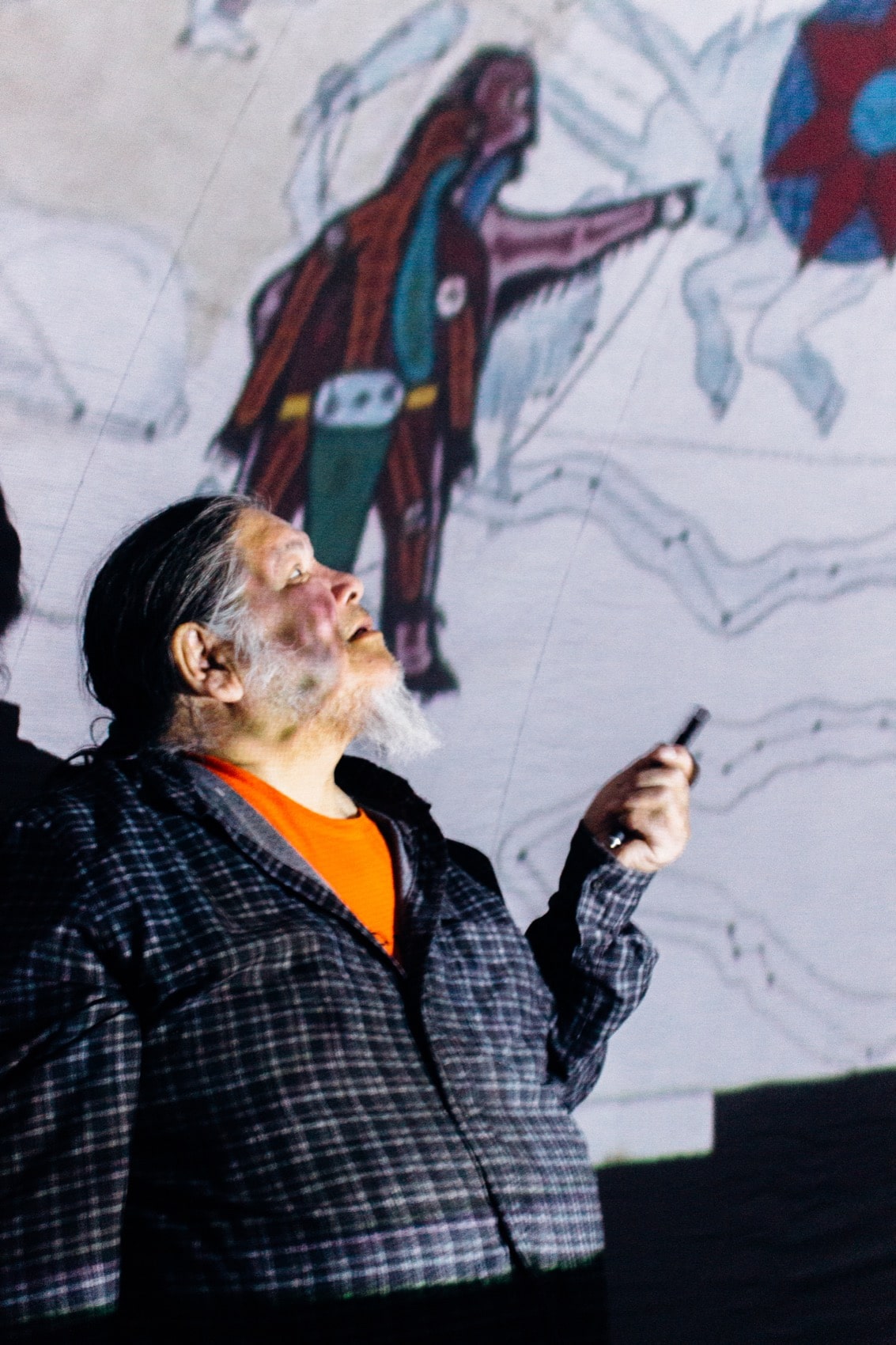
Keep searching. Keep watching the stars and the insects and the dirt and the fire. Keep listening and learning and teaching and sharing. Keep widening your view! Science is everywhere!
Thank you to all the staff and students of Kituwah Preservation and Education Program who inspired this resource and let me build fires and never stop asking questions.
Many others have shared with me and shaped me in my journey as an educator: Donna Beck, Jonnie Walkingstick, Joey Owle, and Katlin Roberts, and Irene Smoker have faithfully guided me and graciously answered every question I asked on the topic of Cherokee culture and language. Mae Hey’s Indigenous-focused 5E lesson plan continues to transform my teaching. The AISES organization taught me how to listen and serve in the Indigenous community where I work. I would not be the teacher I am today were it not for the entire Cherokee community of elders, parents, children, friends, and coworkers who never let me forget where and who I am. ᏍᎩ ᏂᎦᏓ
Next Generation Science Standards
This resource works toward the following performance expectations:
- MS-PS3-3: Apply scientific principles to design, construct, and test a device that either minimizes or maximizes thermal energy transfer.
- MS-ETS1-4: Develop a model to generate data for iterative testing and modification of a proposed object, tool, or process such that an optimal design can be achieved.
- HS-PS3-4: Plan and conduct an investigation to provide evidence that the transfer of thermal energy when two components of different temperatures are combined within a closed system results in a more uniform energy distribution among the components in the system (second law of thermodynamics).
- HS-ETS1-2: Design a solution to a complex real-world problem by breaking it down into smaller, more manageable problems that can be solved through engineering.
Credits:
Written by Jessica Metz
Edits by Shirley Campbell and Xochitl Garcia
Reviewes by Hillary Gutierrez, Laura Diaz, Jennifer Powers, Chenille Williams, Samantha Adams, Katie Brown, and Marta Toran
Digital production by Andrea Corona
 A selection of Science Friday’s podcasts, teaching guides, and other resources are available in the LabXchange library, a free global science classroom open to every curious mind.
A selection of Science Friday’s podcasts, teaching guides, and other resources are available in the LabXchange library, a free global science classroom open to every curious mind.
Meet the Writer
About Jessica Metz
Jessica Metz teaches science at New Kituwah Academy in Cherokee, N.C. She enjoys integrating Cherokee culture into her lessons to empower her students as they explore, understand, and connect to the world around them. A graduate of Western Carolina University, Jessica is a North Carolina Environmental Educator, award-winning 4-H volunteer, 2014 National Geographic Grosvenor Teacher Fellow, and 2019 AISES Sequoyah Fellow.
